No Products in the Cart

What causes dryness down there? What does it mean when your va-jay-jay feels dry? Why am I dry down there? Why do I feel so itchy? How has my down-there lost its strength? And most importantly, is there a way to reverse this discomfort and menopausal mayhem? If you’ve suffered from feeling less-than-lubricated down there, you’ve definitely asked these questions a time or two, right?
After all, “Down There” health feels impossible to maintain as you get older.
There’s the leaking, the dryness, the itching, the UTIs. It feels like a never-ending process trying to keep up with the changes your yoni undergoes before menopause and beyond. And that’s not to mention the hot flashes, insomnia, mood swings, brain fog, and other frustrating symptoms of menopause that heap upon you.
Maybe you’ve been told that potentially dangerous hormone replacement treatments are the only way to stop the itching and dryness downstairs. But there are other ways to restore moisture, soothe delicate tissues, and make itchiness a thing of the past.
How Does Your Vagina Change In Menopause and Perimenopause?
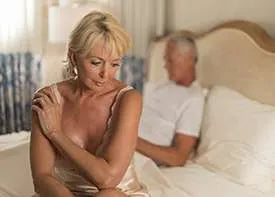
When you reach perimenopause and menopause, your body begins to make preparations to stop ovulating. This means that your ovaries slow down the production of estrogen and other hormones.
And it’s this loss of hormone production that starts to cause the uncomfortable symptoms many women associate with menopause.
When your hormone production wanes, you may experience:
• Nausea
• Brain fog
• Insomnia
• Low mood
• Low energy
• Hot flashes
• Weight gain
• Night sweats
• High cholesterol
• Insulin resistance
• High blood pressure
• Headaches and migraines
On top of all that, there are some serious changes to your vulva, vagina, urethra, and bladder that happen, too. Let’s talk about some of the vulvovaginal and genitourinary symptoms that women most frequently see when they enter their 40s.
Atrophy
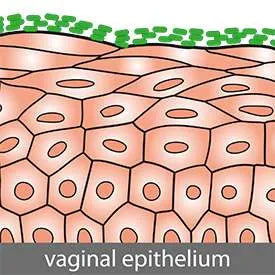
Atrophy is a medical term that basically means to wither and waste away. Atrophy is the main culprit for the rather ridiculous changes women see in their lady parts beginning in perimenopause.
Atrophy happens because when estrogen production declines, there’s less of it to send to your genitourinary (vulva, vagina, urethra, bladder, ovaries, fallopian tubes) tissues. You see, your tissues in these areas are typically flush with estrogen before age 40. So when estrogen disappears, this is where you really start to feel it. You may experience vaginal dryness, itching, leaking, and increased UTIs.(1)
Leaking And Increased Need To Pee
Small pee leaks and feeling like you constantly need to pee are one of the most frustrating and downright annoying things that women over 40 deal with. What angers me the most is that women are told that this is “normal” and we just need to live with it. That’s completely untrue. I’ll talk about ways to stop leaking further down in this article, so keep reading.
Leaking and increased frequency occur because of weakness in the pelvic floor (which can also be a side effect of reduced estrogen) and atrophy of your urinary tissues.
UTIs

Urinary tract infections are quite common, beginning in perimenopause. This is because of estrogen’s protective effects on the urethra (where your urine leaves your body) and your bladder, which wane as estrogen production declines and the tissues in this area atrophy.
Vaginal Dryness And Itching
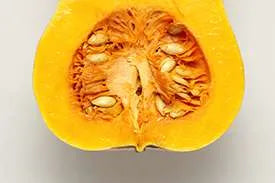
Dryness is another side effect of vaginal atrophy and lack of estrogen. When your vaginal skin begins to thin, it becomes dry. This can make you feel sore in your vagina — especially during and after intercourse or when sitting, urinating, and exercising.
Atrophied tissues can also make your vulva and labia feel extremely itchy. Sometimes women feel a burning sensation in their lady parts, too.
You Could Suffer Through And Hope For The Best
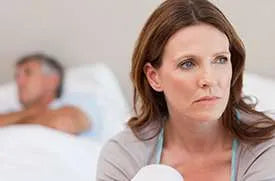
If there’s one option I’d advise you NOT to try, it’s this one. In fact, I’ve tried versions of this myself over the years (I experienced early onset menopause immediately after the birth of my daughter almost 20 years ago).
The thing is, when you accept the fact that your body is aging and make a choice to celebrate that fact, it’s a beautiful thing.
But that also doesn’t mean you have to go quietly into the night, either.
If you’re in pain, you deserve to feel better. And if you’re uncomfortable, itchy, or running to the bathroom every hour, you deserve to feel better. You were meant to live a life of joy, pleasure, and happiness. You can’t do that if your vagina constantly feels like it’s on fire. So please, don’t push this down and ignore it in the hopes that it will go away on its own. Your body won’t magically start making more estrogen for your tired and weary tissues down there.
Hormone Replacement Therapy

Hormone Replacement Therapy (HRT) and vaginal creams containing estrogen are important topics for many women navigating menopause and midlife wellness.
Here’s the short story: years ago, HRT was commonly used as the standard of care for menopausal women. Later, research raised questions about possible health risks — including heart disease, stroke, and breast cancer — leading many women and healthcare providers to become more cautious.
When those early study results were published, HRT use declined significantly.
However, newer research has shown that the initial findings were more complex than once believed. Today, experts recognize that the potential risks and benefits of HRT depend on many individual factors — such as your age, health history, timing of use, and whether the therapy involves estrogen alone or a combination of estrogen and progestin. (2,3)
Yes, replacing estrogen in your body helps reduce vaginal dryness.
But I’d recommend looking at all of the data and assessing your individual needs and risk factors carefully before starting any HRT treatment.
I’ve personally tried hormone therapies and found that while they can be helpful for some women, they weren’t the complete solution for me.
That’s why I believe it’s important to explore a holistic approach—one that supports your body naturally and helps restore and rejuvenate your vaginal health from multiple angles.
Natural Ways To End Your Vaginal Woes + Support Your Hormones
Here’s where things get interesting.
Did you know that there are other plant-based ingredients that also help to encourage estrogen production in the body and lubricate the heck out of your V?
Yep, in my quest to find the perfect vaginal serum over the years, I’ve come across some really stellar things that worked even better than HRT for me.
Things like:

Plus, one review determined hyaluronic acid to be just as effective as estriol for the genitourinary syndrome of menopause (which is the medical term to describe the hassles thinning tissues cause for your vagina, vulva, urethra, and bladder). (32)
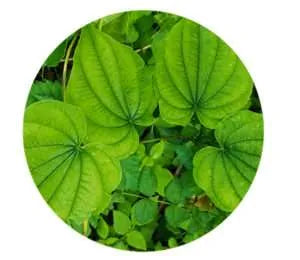
When you use this natural wonder inside your vagina, research indicates it could help make your lady parts happier, wetter, and less troublesome. Plus, it looks like DHEA can help rev up your libido and help you rekindle your love life. (10-22
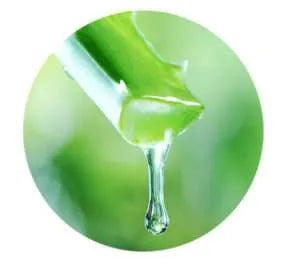
Did you know that aloe is not only amazing for the skin but is also a source of phytoestrogens? (4-9) It delivers a 1-2 punch to knock out that dry, itchy feeling down there.
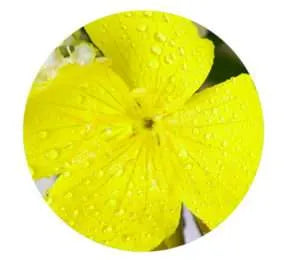
• Evening Primrose Oil: Evening primrose oil is a well-known go-to herb for menopausal women. It’s a phytoestrogen that is also loaded with essential fatty acids. When you put it in your vagina, it restores the skin inside and makes it feel brand new again. (23-25)
And here’s the really exciting news: I’ve formulated my brand-new internal vaginal restoring serum, The Toal Fem Re-Juvenator, with all of these ingredients (and more!)
Click here to learn more about Total Fem Re-Juvenator and how it can help you take your lady parts from dry and itchy to juicy, creamy, and wet once again.
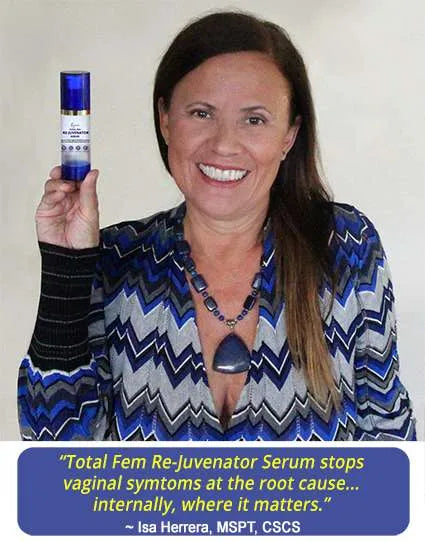
1. “Vaginal Atrophy – StatPearls – NCBI Bookshelf.” 4 Jul. 2022, https://www.ncbi.nlm.nih.gov/books/NBK559297/.
2. “The Controversial History of Hormone Replacement Therapy – NCBI.” 18 Sep. 2019, https://www.ncbi.nlm.nih.gov/pmc/articles/PMC6780820/.
3. “Use of hormone replacement therapy and risk of breast cancer.” 28 Oct. 2020, https://www.bmj.com/content/371/bmj.m3873.
4. “Aloe Vera; A new treatment for atrophic vaginitis, A randomized ….” 24 Apr. 2021, https://www.sciencedirect.com/science/article/abs/pii/S0378874120336485.
5. “Aloe Vera Gel Research Review | Natural Medicine Journal.” 16 Jan. 2014, https://www.naturalmedicinejournal.com/journal/aloe-vera-gel-research-review.
6. “The effects of Aloe Vera sap on progesterone, estrogen and ….”, https://jmj.jums.ac.ir/article-1-23-en.pdf.
7. “In vitro and in silico study of Aloe vera leaf extract against human ….”, https://pubmed.ncbi.nlm.nih.gov/30600703/.
8. “Aloe Vera: A Valuable Ingredient for the Food, Pharmaceutical and ….” 10 Aug. 2010, https://www.tandfonline.com/doi/abs/10.1080/10408690490424694.
9. “Evaluation of biological properties and clinical effectiveness of Aloe ….” https://www.sciencedirect.com/science/article/pii/S2225411014000078.
10. “Effect of Intravaginal Prasterone on Sexual Dysfunction in … – PubMed.”, https://pubmed.ncbi.nlm.nih.gov/26597311/.
11. “Effect of intravaginal dehydroepiandrosterone (DHEA) on the female ….”, https://pubmed.ncbi.nlm.nih.gov/26725467/.
12. “Prescribing testosterone and DHEA: The role of androgens in women.” 1 Jan. 2021, https://www.ccjm.org/content/88/1/35.
13. “Effect of long-term topical application of dehydroepiandrosterone ….” 11 Jun. 2010, https://www.degruyter.com/document/doi/10.1515/HMBCI.2010.026/html.
14. “Skin responses to topical dehydroepiandrosterone – PubMed.”, https://pubmed.ncbi.nlm.nih.gov/20698844/.
15. “Effects of topical DHEA on aging skin: a pilot study – PubMed.” 20 Feb. 2008, https://pubmed.ncbi.nlm.nih.gov/18242894/.
16. “Diosgenin: Recent Highlights on Pharmacology and Analytical ….”, https://www.ncbi.nlm.nih.gov/pmc/articles/PMC5225340/.
17. “Efficacy of intravaginal dehydroepiandrosterone (DHEA … – PubMed.”, https://pubmed.ncbi.nlm.nih.gov/26731686/.
18. “Vaginal dehydroepiandrosterone compared to other methods … – NCBI.” 7 Jan. 2021, https://www.ncbi.nlm.nih.gov/pmc/articles/PMC7812532/.
19. “Impact of vaginal dehydroepiandosterone (DHEA … – ASCO Journals.” 20 May. 2014, https://ascopubs.org/doi/abs/10.1200/jco.2014.32.15_suppl.9507.
20. “Effects of Wild Yam Root (Dioscorea villosa) Extract on the Gene ….” 3 Nov. 2021, https://www.ncbi.nlm.nih.gov/pmc/articles/PMC8569819/.
21. “Bioassay-guided evaluation of Dioscorea villosa – an acute and ….” 28 Jul. 2013, https://www.ncbi.nlm.nih.gov/pmc/articles/PMC3734200/.
22. “Estrogen activities and the cellular effects of natural … – PubMed.”, https://pubmed.ncbi.nlm.nih.gov/19222119/.
23. “Effect of topically applied evening primrose oil on epidermal barrier ….”, https://pubmed.ncbi.nlm.nih.gov/10442214/.
24. “Systemic evening primrose oil improves the biophysical skin ….”, https://pubmed.ncbi.nlm.nih.gov/18492193/.
25. “Evening Primrose (Oenothera biennis) Oil in Management of … – NCBI.”, https://www.ncbi.nlm.nih.gov/pmc/articles/PMC6718646/.
26. “Hyaluronic acid: A key molecule in skin aging – PMC – NCBI.”, https://www.ncbi.nlm.nih.gov/pmc/articles/PMC3583886/.
27. “Hyaluronic Acid: A Valid Therapeutic Option for Early Management ….” 13 Aug. 2022, https://www.ncbi.nlm.nih.gov/pmc/articles/PMC9408661/.
28. “Hyaluronic Acid in Postmenopause Vaginal Atrophy – PubMed.” 5 Dec. 2020, https://pubmed.ncbi.nlm.nih.gov/33293236/.
29. “Comparison of the Hyaluronic Acid Vaginal Cream and Conjugated ….", https://www.ncbi.nlm.nih.gov/pmc/articles/PMC4709811/.
30. “Is vaginal hyaluronic acid effective in reducing symptoms of….” 17 Aug. 2022, https://journals.lww.com/ebp/Fulltext/9900/Is_vaginal_hyaluronic_acid_effective_in_reducing.146.aspx.
31. “Evaluation of the Efficacy and Safety of Hyaluronic Acid Vaginal Gel ….”, https://www.sciencedirect.com/science/article/abs/pii/S1743609515303994.
32. “Is vaginal hyaluronic acid as effective as vaginal estriol for … – PubMed.”, https://pubmed.ncbi.nlm.nih.gov/24178484/.

Isa Herrera, MSPT, CSCS is a New York City-based holistic women's pelvic floor specialist, author of 5 books on pelvic health, including the international best seller Female Pelvic Alchemy, and the ground-breaking self-help book, Ending Female Pain, A Woman's Manual. She has dedicated her career to advancing awareness of pelvic floor conditions so that more people can find relief from this silent epidemic that affects over 30 million people in the US alone. Ms. Herrera holds a BA in Psychology and Biology from Fordham University and also a Masters in Physical Therapy from Hunter College.